Abstract
1. The interactions between 5-hydroxytryptamine (5-HT) and the antagonists ketanserin, methysergide and phentolamine were studied in isolated preparations of human umbilical artery (HUA) at physiological oxygen tension (Po2 approximately 15 mmHg) and at high PO2 (approximately 120 mmHg). 2. At physiological Po2 ketanserin, methysergide and phentolamine behaved as silent competitive antagonists of the 5-HT-induced contraction of HUA. pA2 values calculated by Schild analysis were 8.92, 8.52 and 6.37, respectively. 3. At high Po2, 5-HT-induced contractions were antagonised in a biphasic manner by ketanserin (0.1 microM); the response to low but not to high concentrations of 5-HT was resistant to blockade by ketanserin. The ketanserin-resistant component was abolished following cyclo-oxygenase inhibition by indomethacin (1 microM). 4. At high Po2, methysergide behaved as a partial agonist. Methysergide-induced contractions were inhibited but not abolished by indomethacin, and resistant to 5-HT2 receptor and alpha 1-adrenoceptor blockade. 5. At high Po2 the component of the response to 5-HT mediated by the ketanserin-resistant receptor was mimicked by the selective 5-HT1-like receptor agonist 5-carboxamidotryptamine (5-CT): 5-CT was 7 fold more potent than 5-HT. 6. At high Po2 the component of the response to 5-HT mediated by the ketanserin-resistant receptor was antagonised by phentolamine and the selective alpha 2-adrenoceptor antagonist Wy 26703. 7. These results suggest that (i) at physiological Po2 5-HT2 receptors almost exclusively mediate contractions induced by 5-HT, and (ii) at high Po2 the agonist potency order of 5-CT greater than 5-HT greater than methysergide suggests that ketanserin-resistant responses are mediated by 5-HT1-like receptors which require functional cyclo-oxygenase.
Full text
PDF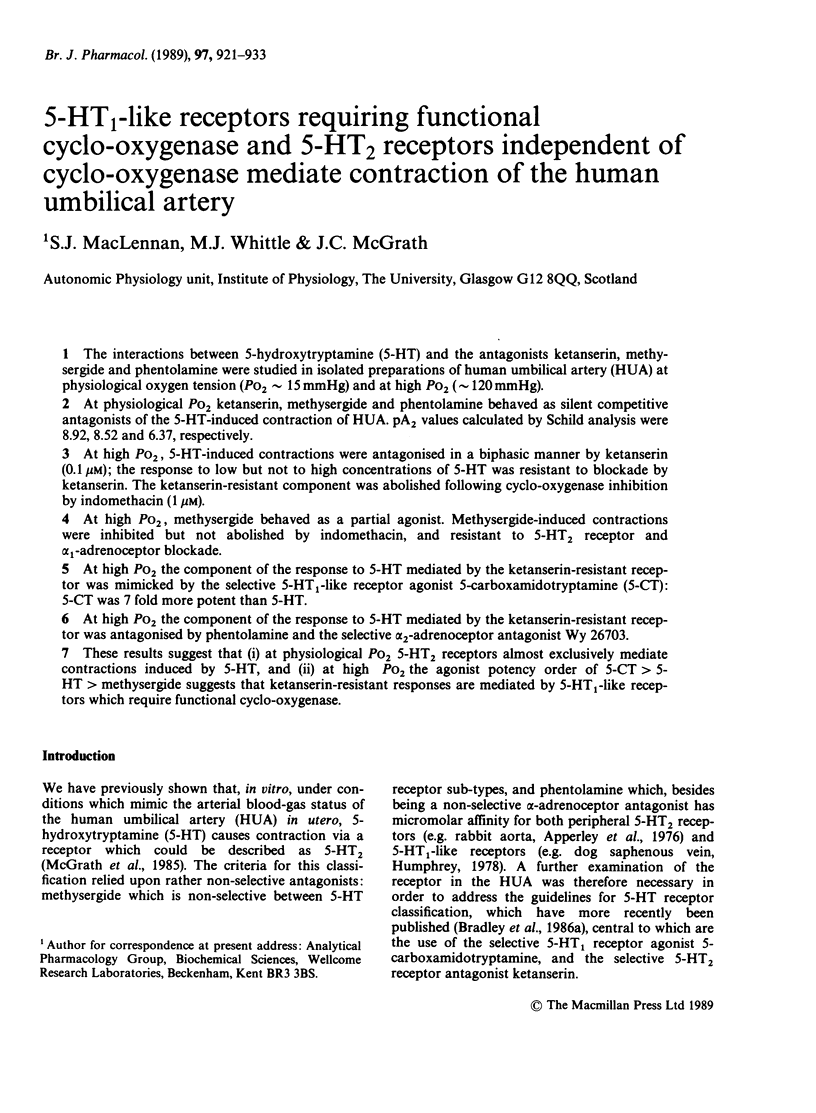
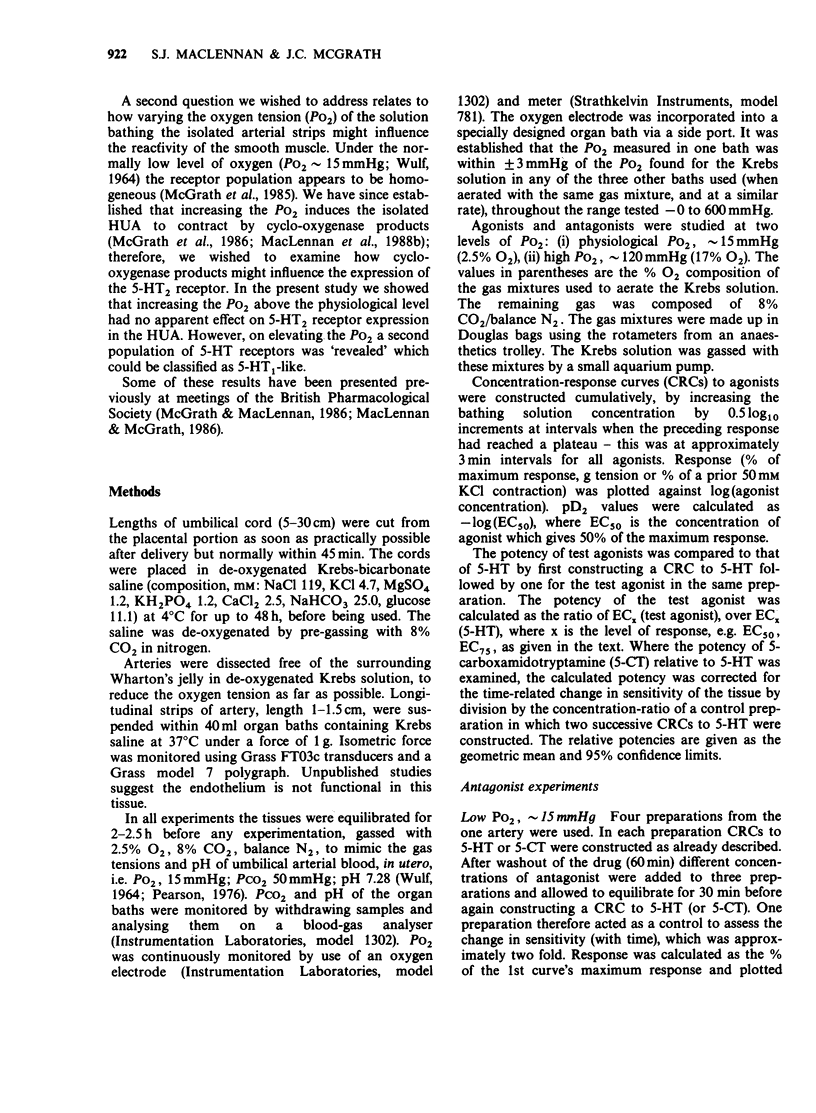
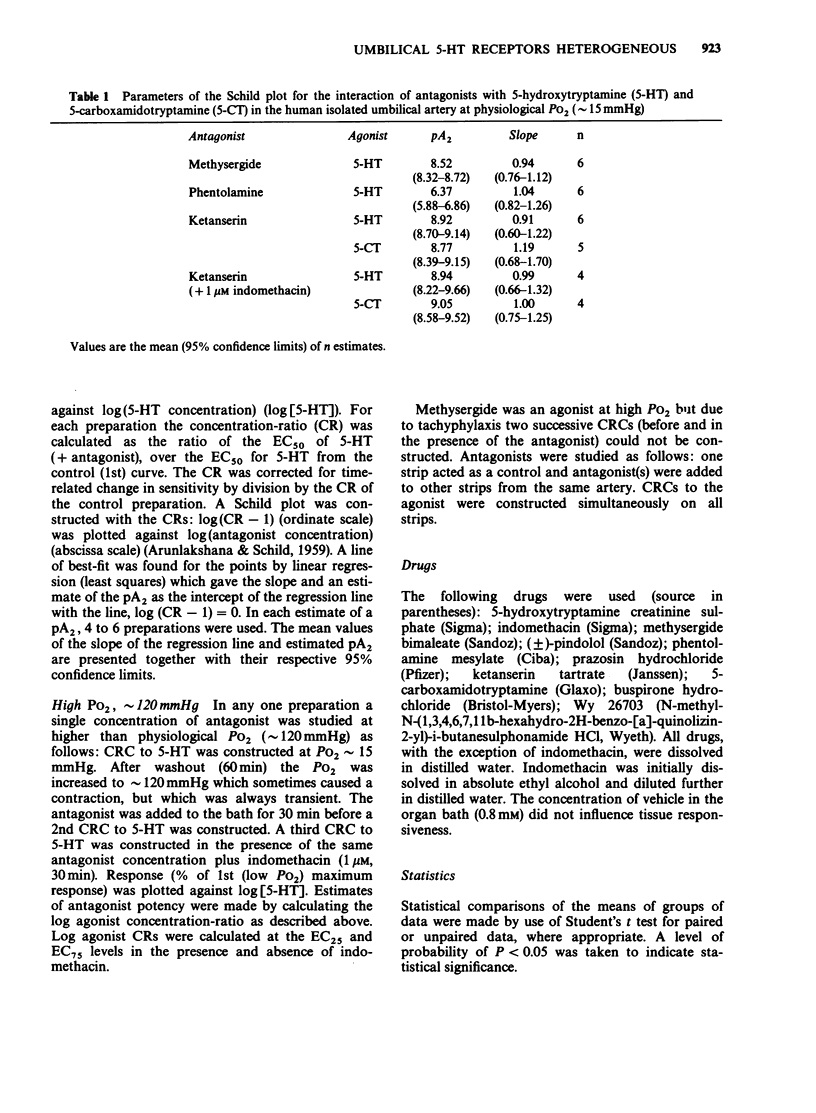
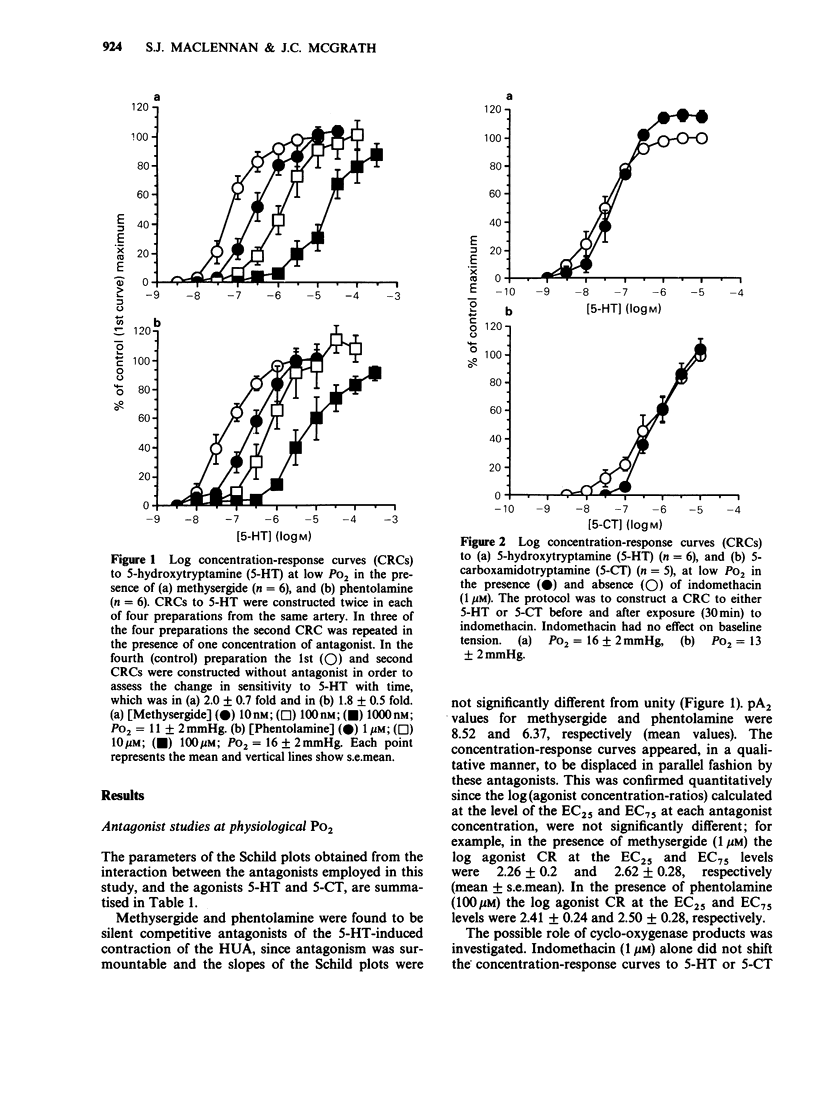
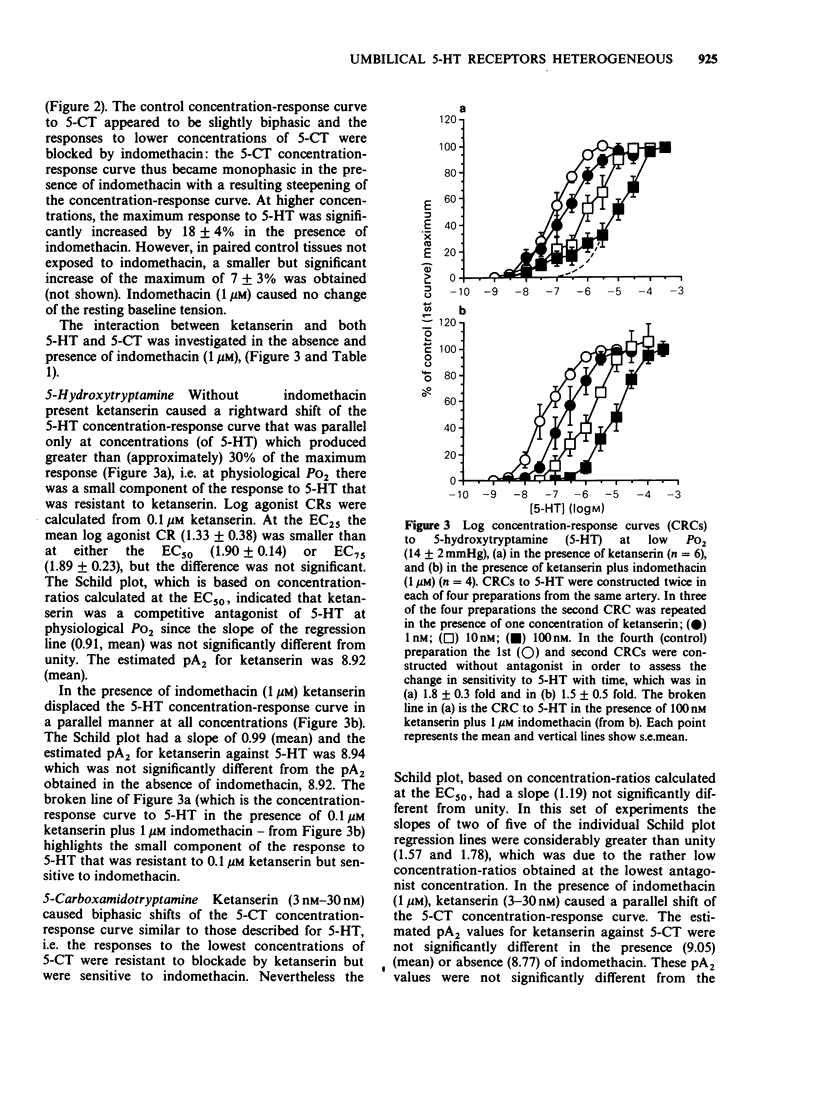
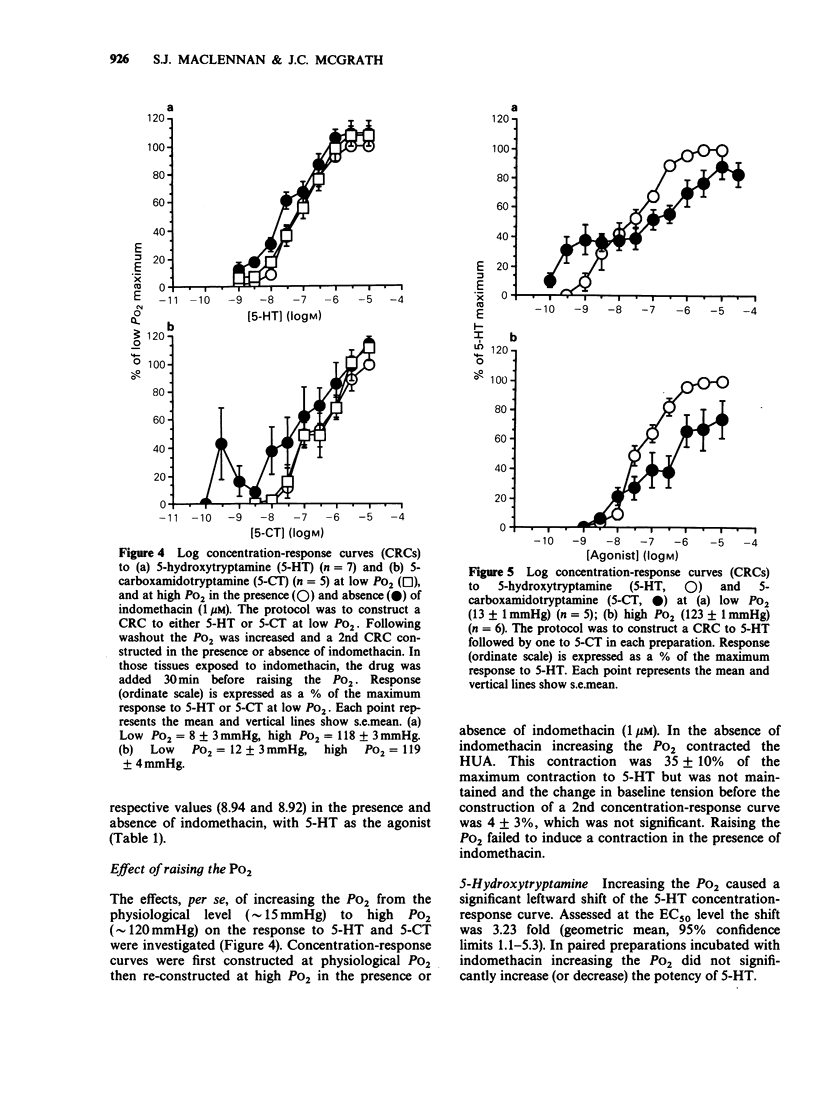
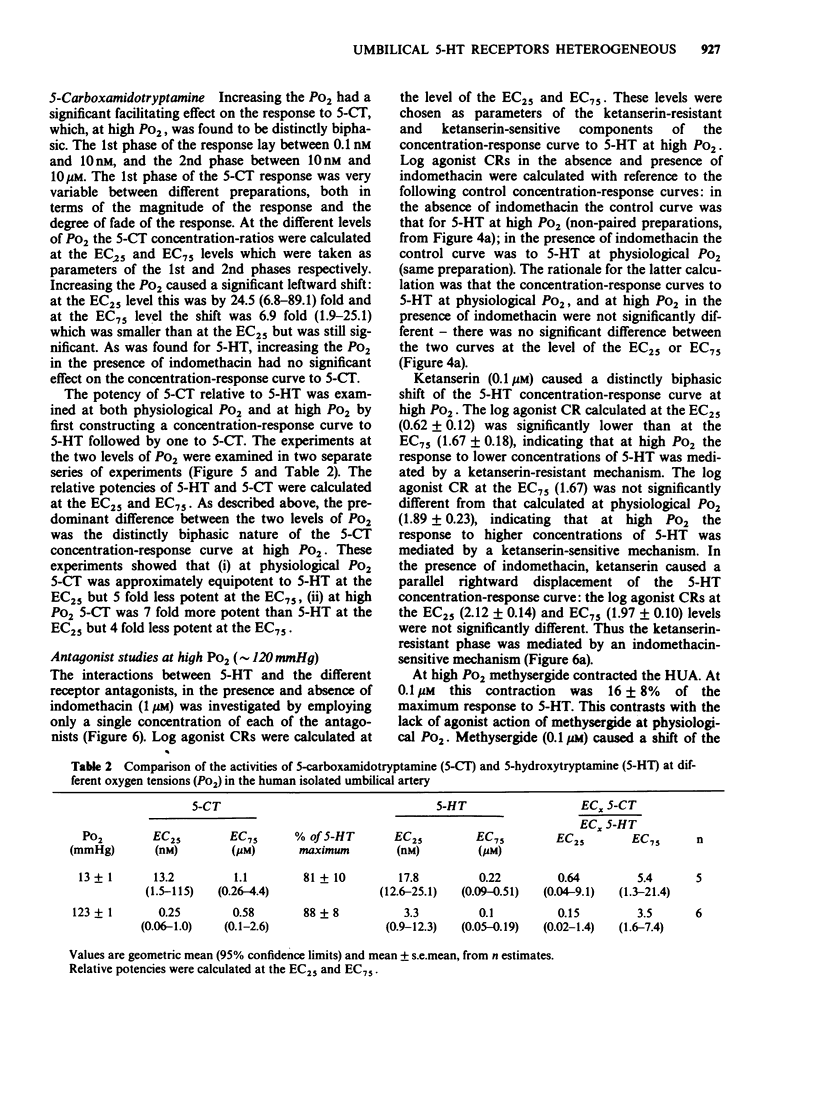
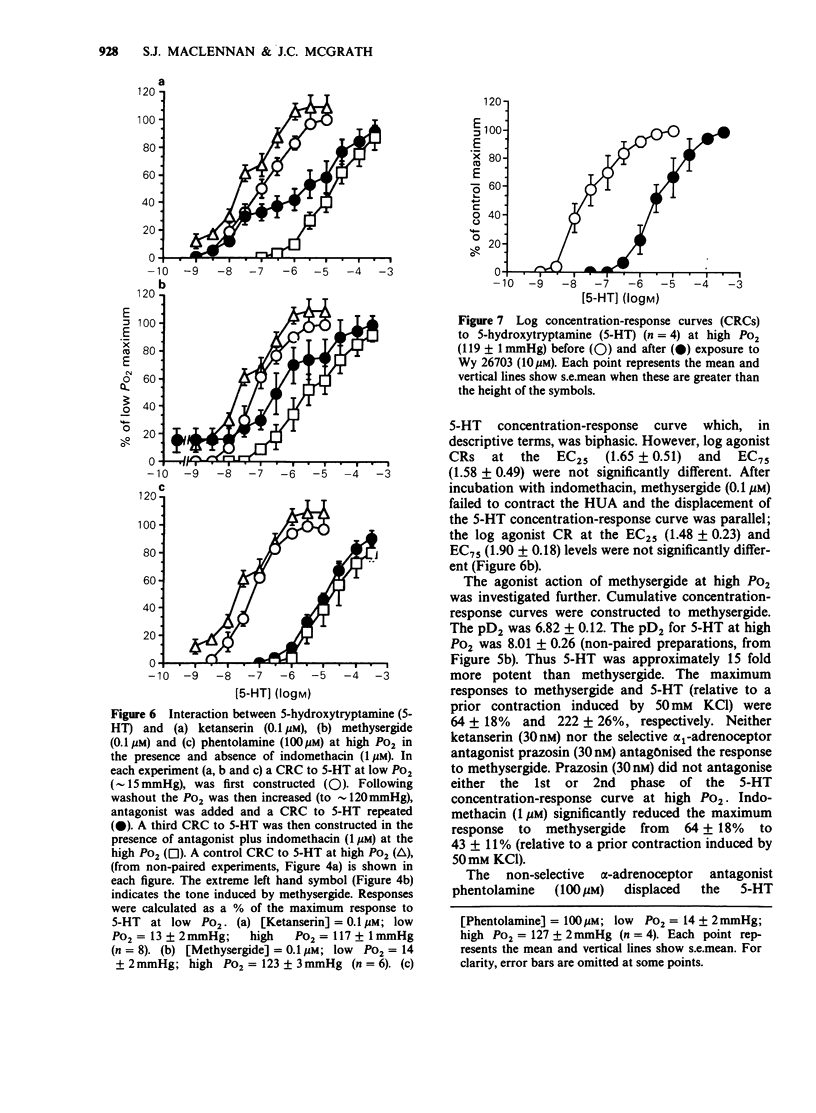
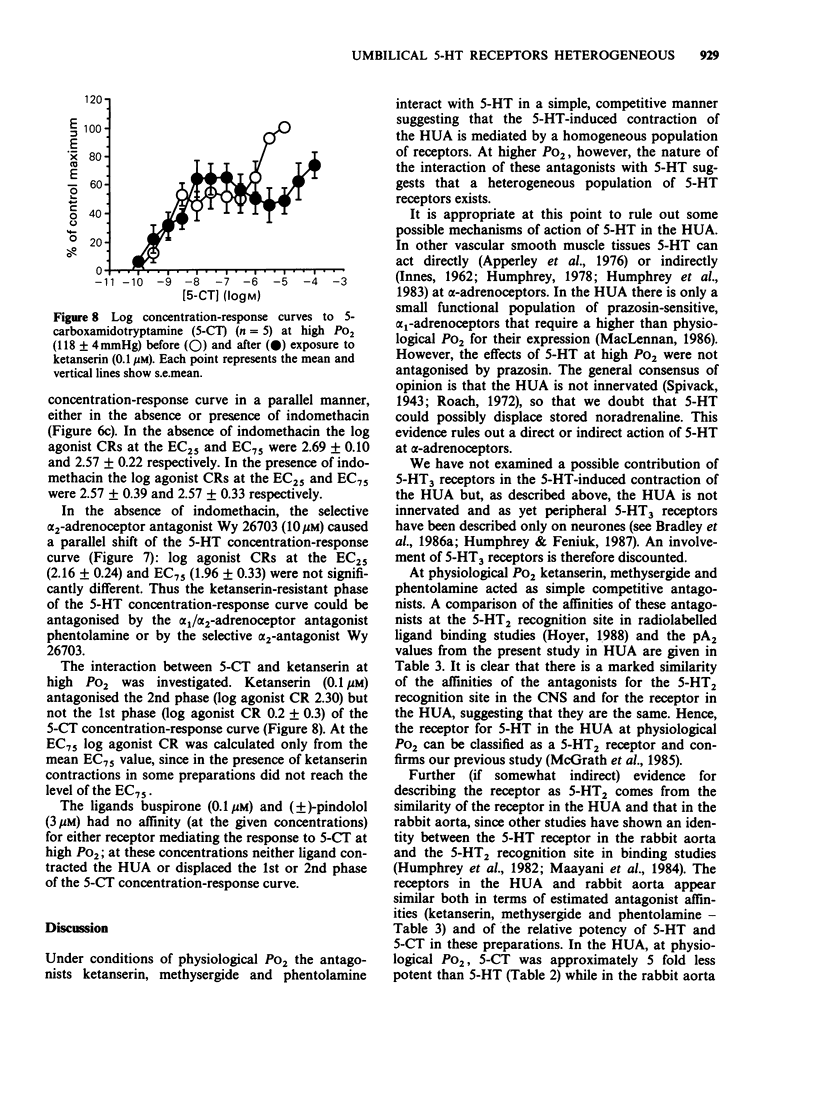
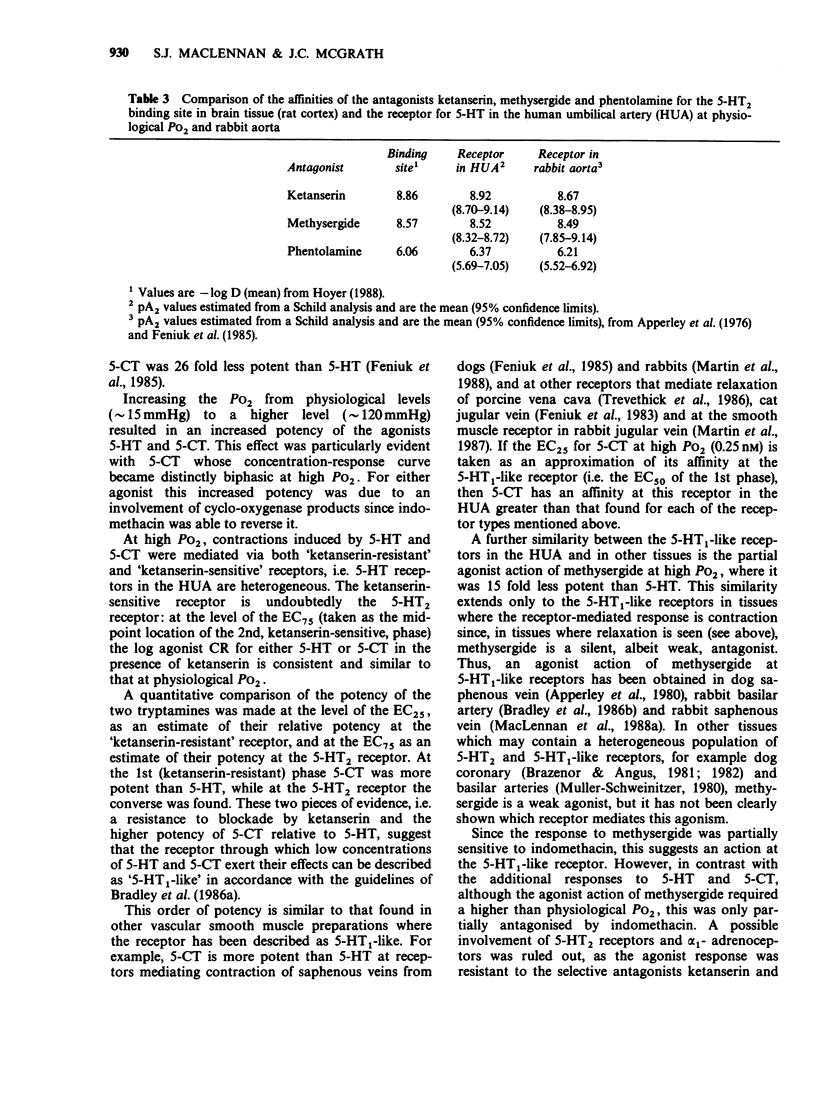
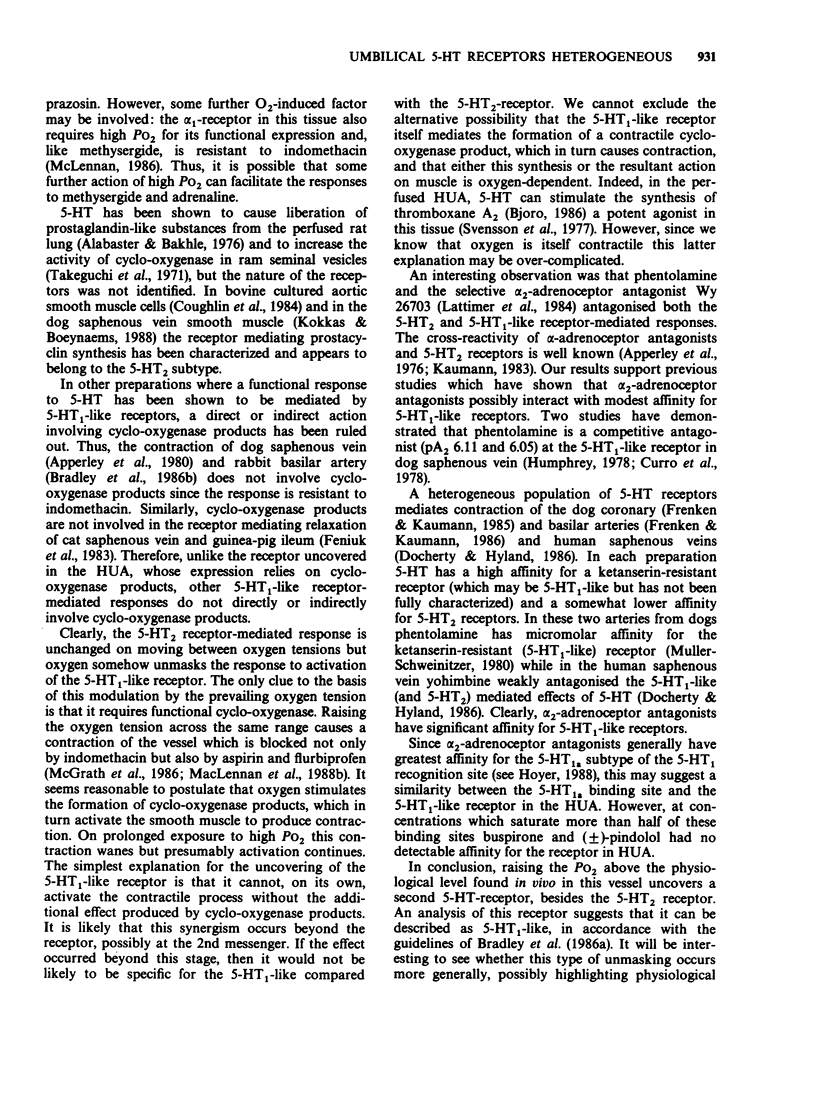
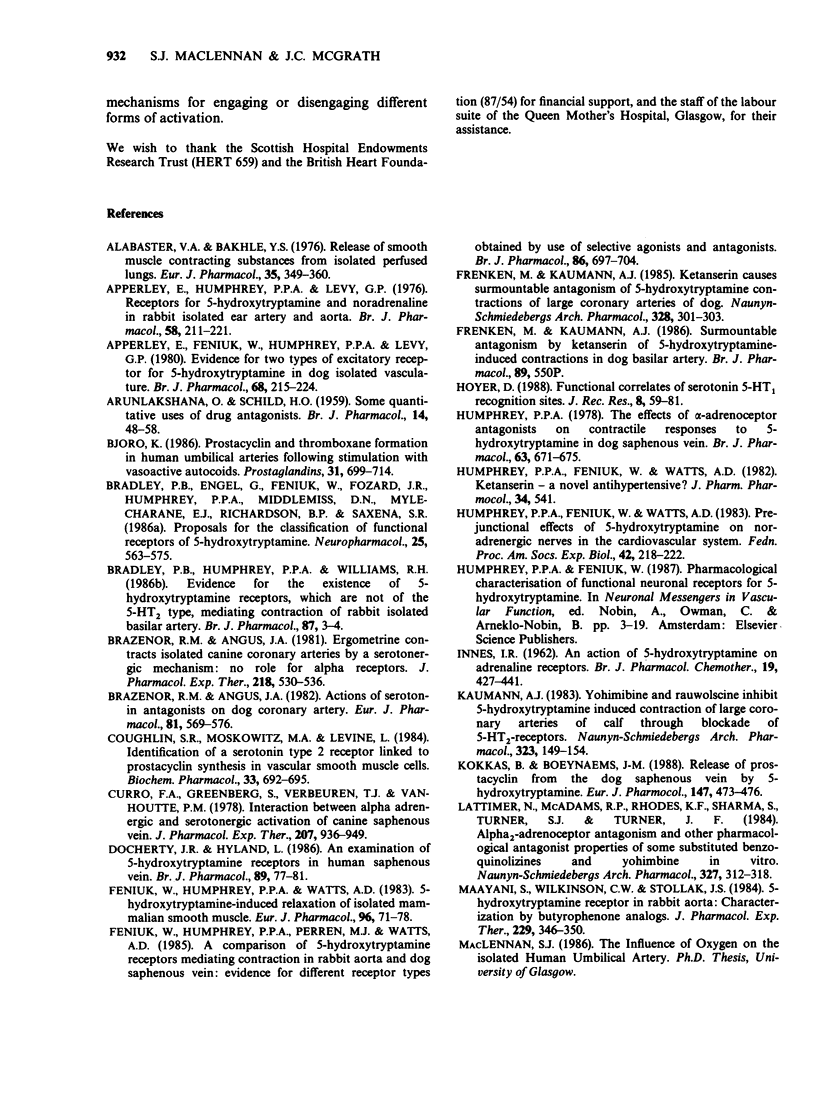
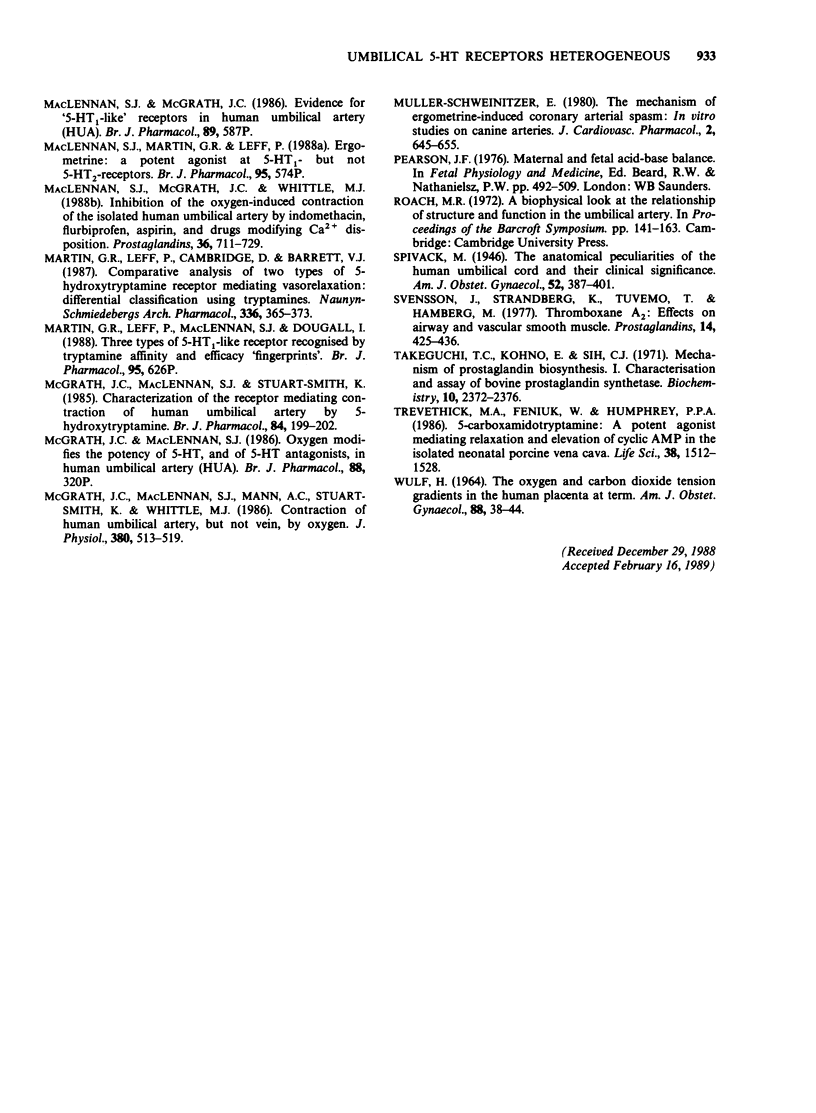
Selected References
These references are in PubMed. This may not be the complete list of references from this article.
- ARUNLAKSHANA O., SCHILD H. O. Some quantitative uses of drug antagonists. Br J Pharmacol Chemother. 1959 Mar;14(1):48–58. doi: 10.1111/j.1476-5381.1959.tb00928.x. [DOI] [PMC free article] [PubMed] [Google Scholar]
- Alabaster V. A., Bakhle Y. S. Release of smooth muscle-contracting substances from isolated perfused lungs. Eur J Pharmacol. 1976 Feb;35(2):349–360. doi: 10.1016/0014-2999(76)90238-7. [DOI] [PubMed] [Google Scholar]
- Apperley E., Feniuk W., Humphrey P. P., Levy G. P. Evidence for two types of excitatory receptor for 5-hydroxytryptamine in dog isolated vasculature. Br J Pharmacol. 1980 Feb;68(2):215–224. doi: 10.1111/j.1476-5381.1980.tb10410.x. [DOI] [PMC free article] [PubMed] [Google Scholar]
- Apperley E., Humphrey P. P., Levy G. P. Receptors for 5-hydroxytryptamine and noradrenaline in rabbit isolated ear artery and aorta. Br J Pharmacol. 1976 Oct;58(2):211–221. doi: 10.1111/j.1476-5381.1976.tb10398.x. [DOI] [PMC free article] [PubMed] [Google Scholar]
- Bjøro K. Prostacyclin and thromboxane formation in human umbilical arteries following stimulation with vasoactive autacoids. Prostaglandins. 1986 Apr;31(4):699–714. doi: 10.1016/0090-6980(86)90175-9. [DOI] [PubMed] [Google Scholar]
- Bradley P. B., Humphrey P. P., Williams R. H. Evidence for the existence of 5-hydroxytryptamine receptors, which are not of the 5-HT2 type, mediating contraction of rabbit isolated basilar artery. Br J Pharmacol. 1986 Jan;87(1):3–4. doi: 10.1111/j.1476-5381.1986.tb10149.x. [DOI] [PMC free article] [PubMed] [Google Scholar]
- Brazenor R. M., Angus J. A. Actions of serotonin antagonists on dog coronary artery. Eur J Pharmacol. 1982 Jul 30;81(4):569–576. doi: 10.1016/0014-2999(82)90346-6. [DOI] [PubMed] [Google Scholar]
- Brazenor R. M., Angus J. A. Ergometrine contracts isolated canine coronary arteries by a serotonergic mechanism: no role for alpha adrenoceptors. J Pharmacol Exp Ther. 1981 Aug;218(2):530–536. [PubMed] [Google Scholar]
- Coughlin S. R., Moskowitz M. A., Levine L. Identification of a serotonin type 2 receptor linked to prostacyclin synthesis in vascular smooth muscle cells. Biochem Pharmacol. 1984 Feb 15;33(4):692–695. doi: 10.1016/0006-2952(84)90330-7. [DOI] [PubMed] [Google Scholar]
- Curro F. A., Greenberg S., Verbeuren T. J., Vanhoutte P. M. Interaction between alpha adrenergic and serotonergic activation of canine saphenous veins. J Pharmacol Exp Ther. 1978 Dec;207(3):936–949. [PubMed] [Google Scholar]
- Docherty J. R., Hyland L. An examination of 5-hydroxytryptamine receptors in human saphenous vein. Br J Pharmacol. 1986 Sep;89(1):77–81. doi: 10.1111/j.1476-5381.1986.tb11122.x. [DOI] [PMC free article] [PubMed] [Google Scholar]
- Feniuk W., Humphrey P. P., Perren M. J., Watts A. D. A comparison of 5-hydroxytryptamine receptors mediating contraction in rabbit aorta and dog saphenous vein: evidence for different receptor types obtained by use of selective agonists and antagonists. Br J Pharmacol. 1985 Nov;86(3):697–704. doi: 10.1111/j.1476-5381.1985.tb08948.x. [DOI] [PMC free article] [PubMed] [Google Scholar]
- Feniuk W., Humphrey P. P., Watts A. D. 5-Hydroxytryptamine-induced relaxation of isolated mammalian smooth muscle. Eur J Pharmacol. 1983 Dec 9;96(1-2):71–78. doi: 10.1016/0014-2999(83)90530-7. [DOI] [PubMed] [Google Scholar]
- Frenken M., Kaumann A. J. Ketanserin causes surmountable antagonism of 5-hydroxytryptamine-induced contractions of large coronary arteries of dog. Naunyn Schmiedebergs Arch Pharmacol. 1985 Jan;328(3):301–303. doi: 10.1007/BF00515557. [DOI] [PubMed] [Google Scholar]
- Hoyer D. Functional correlates of serotonin 5-HT1 recognition sites. J Recept Res. 1988;8(1-4):59–81. doi: 10.3109/10799898809048978. [DOI] [PubMed] [Google Scholar]
- Humphrey P. P., Feniuk W., Watts A. D. Ketanserin--a novel antihypertensive drug? J Pharm Pharmacol. 1982 Aug;34(8):541–541. doi: 10.1111/j.2042-7158.1982.tb04788.x. [DOI] [PubMed] [Google Scholar]
- Humphrey P. P., Feniuk W., Watts A. D. Prejunctional effects of 5-hydroxytryptamine on noradrenergic nerves in the cardiovascular system. Fed Proc. 1983 Feb;42(2):218–222. [PubMed] [Google Scholar]
- Humphrey P. P. The effects of alpha-adrenoceptor antagonists on contractile responses to 5-hydroxytryptamine in dog saphenous vein. Br J Pharmacol. 1978 Aug;63(4):671–675. doi: 10.1111/j.1476-5381.1978.tb17281.x. [DOI] [PMC free article] [PubMed] [Google Scholar]
- INNES I. R. An action of 5-hydroxytryptamine on adrenaline receptors. Br J Pharmacol Chemother. 1962 Dec;19:427–441. doi: 10.1111/j.1476-5381.1962.tb01447.x. [DOI] [PMC free article] [PubMed] [Google Scholar]
- Kaumann A. J. Yohimbine and rauwolscine inhibit 5-hydroxytryptamine-induced contraction of large coronary arteries of calf through blockade of 5 HT2 receptors. Naunyn Schmiedebergs Arch Pharmacol. 1983 Jun;323(2):149–154. doi: 10.1007/BF00634263. [DOI] [PubMed] [Google Scholar]
- Kokkas B., Boeynaems J. M. Release of prostacyclin from the dog saphenous vein by 5-hydroxytryptamine. Eur J Pharmacol. 1988 Mar 15;147(3):473–476. doi: 10.1016/0014-2999(88)90184-7. [DOI] [PubMed] [Google Scholar]
- Lattimer N., McAdams R. P., Rhodes K. F., Sharma S., Turner S. J., Waterfall J. F. Alpha 2-adrenoceptor antagonism and other pharmacological antagonist properties of some substituted benzoquinolizines and yohimbine in vitro. Naunyn Schmiedebergs Arch Pharmacol. 1984 Oct;327(4):312–318. doi: 10.1007/BF00506242. [DOI] [PubMed] [Google Scholar]
- Maayani S., Wilkinson C. W., Stollak J. S. 5-Hydroxytryptamine receptor in rabbit aorta: characterization by butyrophenone analogs. J Pharmacol Exp Ther. 1984 May;229(2):346–350. [PubMed] [Google Scholar]
- MacLennan S. J., McGrath J. C., Whittle M. J. Inhibition of the oxygen-induced contraction of the isolated human umbilical artery by indomethacin, flurbiprofen, aspirin and drugs modifying Ca2+ disposition. Prostaglandins. 1988 Nov;36(5):711–729. doi: 10.1016/0090-6980(88)90015-9. [DOI] [PubMed] [Google Scholar]
- Martin G. R., Leff P., Cambridge D., Barrett V. J. Comparative analysis of two types of 5-hydroxytryptamine receptor mediating vasorelaxation: differential classification using tryptamines. Naunyn Schmiedebergs Arch Pharmacol. 1987 Oct;336(4):365–373. doi: 10.1007/BF00164867. [DOI] [PubMed] [Google Scholar]
- McGrath J. C., MacLennan S. J., Mann A. C., Stuart-Smith K., Whittle M. J. Contraction of human umbilical artery, but not vein, by oxygen. J Physiol. 1986 Nov;380:513–519. doi: 10.1113/jphysiol.1986.sp016299. [DOI] [PMC free article] [PubMed] [Google Scholar]
- McGrath J. C., MacLennan S. J., Stuart-Smith K. Characterization of the receptor mediating contraction of human umbilical artery by 5-hydroxytryptamine. Br J Pharmacol. 1985 Jan;84(1):199–202. doi: 10.1111/j.1476-5381.1985.tb17370.x. [DOI] [PMC free article] [PubMed] [Google Scholar]
- Müller-Schweinitzer E. The mechanism of ergometrine-induced coronary arterial spasm: in vitro studies on canine arteries. J Cardiovasc Pharmacol. 1980 Sep-Oct;2(5):645–655. doi: 10.1097/00005344-198009000-00013. [DOI] [PubMed] [Google Scholar]
- Svenssen J., Strandberg K., Tuvemo T., Hamberg M. Thromboxane A2: effects on airway and vascular smooth muscle. Prostaglandins. 1977 Sep;14(3):425–436. doi: 10.1016/0090-6980(77)90258-1. [DOI] [PubMed] [Google Scholar]
- Takeguchi C., Kono E., Sih C. J. Mechanism of prostaglandin biosynthesis. I. Characterization and assay of bovine prostaglandin synthetase. Biochemistry. 1971 Jun 8;10(12):2372–2376. doi: 10.1021/bi00788a030. [DOI] [PubMed] [Google Scholar]
- Trevethick M. A., Feniuk W., Humphrey P. P. 5-Carboxamidotryptamine: a potent agonist mediating relaxation and elevation of cyclic AMP in the isolated neonatal porcine vena cava. Life Sci. 1986 Apr 21;38(16):1521–1528. doi: 10.1016/0024-3205(86)90566-7. [DOI] [PubMed] [Google Scholar]
- WULF H. THE OXYGEN AND CARBON DIOXIDE TENSION GRADIENTS IN THE HUMAN PLACENTA AT TERM. Am J Obstet Gynecol. 1964 Jan 1;88:38–44. doi: 10.1016/0002-9378(64)90227-3. [DOI] [PubMed] [Google Scholar]


